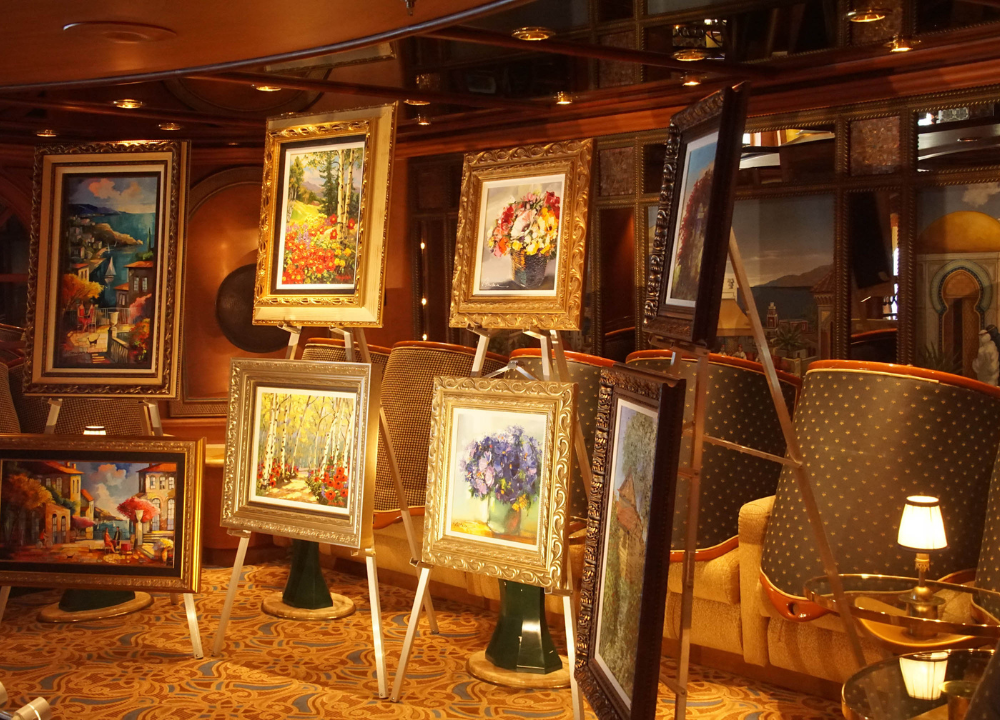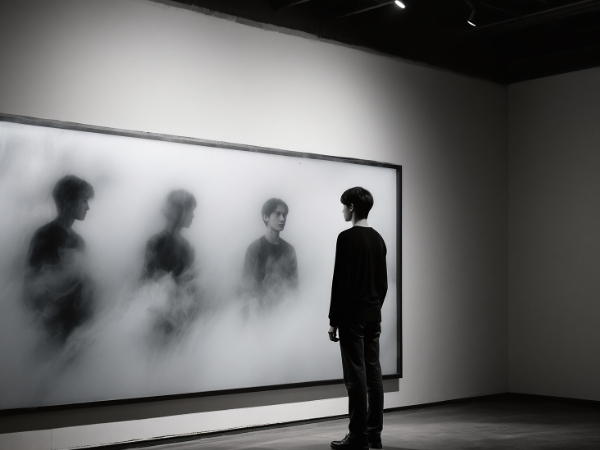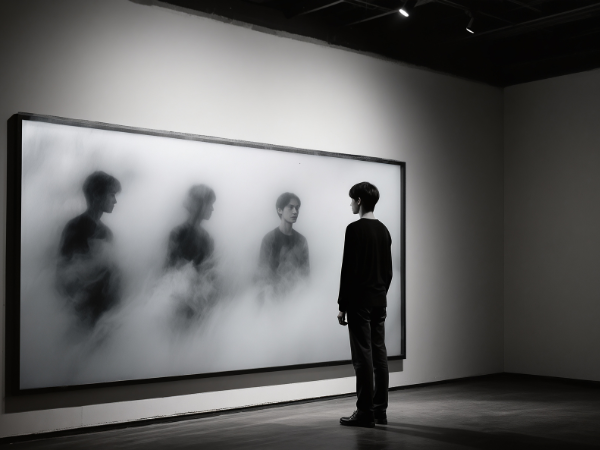Fine art is a creative visual art form, primarily created for aesthetic and intellectual purposes. It includes painting, sculpture, drawing, and printmaking.
Fine art captivates audiences through its beauty and emotional depth. Artists use various mediums to express their visions and provoke thought. Painting, sculpture, and drawing are some popular forms that fall under fine art. Each piece reflects the artist’s creativity and can evoke a range of emotions.
Fine art often challenges viewers’ perceptions and invites them to explore new perspectives. It plays a significant role in cultural and historical contexts, showcasing human ingenuity and expression. Collectors and enthusiasts highly value fine art for its uniqueness and ability to inspire. It remains an essential part of the artistic world.
The Origins Of Fine Art
Fine art refers to creative works valued for their beauty and emotional power. The origins of fine art trace back to ancient times, where humans first expressed themselves through visual forms. This journey through the ages highlights the evolution and significance of fine art in human culture.
Early Beginnings
The early beginnings of fine art can be traced back to prehistoric times. Cave paintings in places like Lascaux, France, show that humans have always felt a need to express themselves visually. These paintings, dating back over 17,000 years, depict animals, human figures, and abstract signs.
Some key points about early fine art:
- Cave Art: Found in caves across Europe, Asia, and Africa.
- Petroglyphs: Rock carvings that predate written language.
- Venus Figurines: Small statuettes representing the female form.
Early art was not just about aesthetics. It had ceremonial and functional purposes. For example, some believe these artworks were part of hunting rituals or spiritual practices. Rock art in Africa, dating back 40,000 years, also shows that early humans were highly skilled artists.
Here’s a quick table showcasing some early fine art examples:
| Art Form | Location | Estimated Age |
|---|---|---|
| Cave Paintings | Lascaux, France | 17,000 years |
| Petroglyphs | Serra da Capivara, Brazil | 25,000 years |
| Venus Figurines | Europe | 30,000 years |
Evolution Over Time
Fine art evolved significantly over time. Ancient civilizations like Egypt, Greece, and Rome made great advances. Egyptian art is famous for its wall paintings, sculptures, and jewelry. These pieces often depicted gods, pharaohs, and daily life scenes.
In ancient Greece, art became more realistic. Greek sculptures captured the human body in motion and with great detail. This period saw the rise of famous sculptors like Phidias and Praxiteles.
The Roman Empire continued this tradition, but with a focus on realism. Roman art included mosaics, frescoes, and portrait sculptures. They built grand structures like the Colosseum, showcasing their architectural prowess.
During the Middle Ages, art took on a more religious tone. Medieval art was dominated by Christian themes, with intricate illuminations in manuscripts and stained glass windows in cathedrals.
The Renaissance marked a rebirth of classical ideals and humanism. Artists like Leonardo da Vinci, Michelangelo, and Raphael pushed the boundaries of art. They introduced techniques like perspective, bringing a three-dimensional feel to their works.
Some key milestones in the evolution of fine art:
- Egyptian Art: Focused on symmetry and order.
- Greek Art: Emphasized realism and human anatomy.
- Roman Art: Known for its engineering and realistic portraits.
- Medieval Art: Dominated by religious themes.
- Renaissance Art: Revival of classical techniques and humanism.
Fine art continues to evolve, reflecting the ever-changing human experience.

Defining Fine Art
Fine Art is a term used to describe creative works that are appreciated for their beauty and emotional power. Defining Fine Art can be challenging due to its subjective nature. It encompasses various forms, each with unique characteristics and methods of expression.
Characteristics
Fine Art is distinguished by several key characteristics that set it apart from other types of art. These include:
- Aesthetic Value: The primary focus is on beauty and visual appeal.
- Emotional Impact: Fine Art aims to evoke feelings and provoke thought.
- Technical Skill: Artists use advanced techniques to create intricate and detailed works.
- Originality: Each piece is unique, reflecting the artist’s personal vision.
These characteristics ensure that Fine Art remains a significant cultural and artistic phenomenon. Artists strive to push the boundaries of creativity, often experimenting with new materials and techniques. Fine Art is not just about the final product but also the process of creation. This process often involves deep contemplation and a profound connection between the artist and their work.
Forms Of Expression
Fine Art encompasses various forms of expression, each with its own unique qualities. Some of the most common forms include:
- Painting: Using pigments on surfaces like canvas, paper, or walls.
- Sculpture: Creating three-dimensional works from materials such as stone, metal, or clay.
- Drawing: Using pencils, charcoal, or ink to create detailed images.
- Printmaking: Producing artworks by printing, typically on paper.
- Photography: Capturing images through cameras to convey artistic visions.
Each form offers different ways to express ideas and emotions. For example, paintings can use color and brush strokes to create mood and atmosphere. Sculptures can convey form and space, giving physical presence to ideas. Drawings often focus on line and detail, capturing intricate designs. Printmaking allows for the reproduction of images, making art more accessible. Photography captures moments in time, offering a unique perspective on the world.
These forms of expression highlight the diversity and richness of Fine Art. Each one offers unique opportunities for creativity and personal expression, making Fine Art a vital part of human culture.
Appreciating Fine Art
Fine art is a form of creative expression that encompasses painting, sculpture, drawing, photography, and more. It is created for aesthetics and intellectual purposes. Appreciating fine art involves understanding its emotional and cultural depth. This appreciation enhances our experience and connection with art.
Emotional Impact
Fine art has a profound emotional impact on viewers. It can evoke a wide range of feelings such as joy, sadness, anger, or serenity. The emotions stirred by fine art are often personal and unique to each individual.
Here are some ways fine art impacts emotions:
- Color Use: Bright colors can uplift mood, while dark tones may create a somber atmosphere.
- Subject Matter: A painting of a peaceful landscape can instill calmness, whereas a chaotic scene may provoke anxiety.
- Technique: The brush strokes, texture, and form can influence how we feel about the artwork.
Artists use various techniques to convey emotions. For instance, Vincent van Gogh’s swirling brush strokes in The Starry Night create a sense of movement and turbulence. This technique can make viewers feel the intensity of the night sky.
Consider the following table showcasing art elements and their emotional impact:
| Art Element | Emotional Impact |
|---|---|
| Color | Bright colors = happiness; Dark colors = sadness |
| Lines | Smooth lines = calmness; Jagged lines = tension |
| Texture | Soft texture = comfort; Rough texture = discomfort |
Cultural Significance
Fine art reflects the cultural significance of its time and place. It serves as a historical document, providing insights into the values, beliefs, and customs of different cultures.
Some key points about the cultural importance of fine art:
- Historical Context: Artworks often depict historical events, offering a visual narrative of the past.
- Traditions and Customs: Art showcases traditional clothing, rituals, and daily life activities.
- Social Commentary: Artists use their work to comment on societal issues and provoke thought.
For example, Pablo Picasso’s Guernica portrays the horrors of war and serves as a powerful anti-war statement. This painting provides a deep understanding of the cultural and political climate during the Spanish Civil War.
Consider this list of how fine art connects with culture:
- Preserves history and heritage.
- Reflects social and political issues.
- Celebrates cultural identity.
Fine art is a window into the soul of society, capturing the essence of different eras and civilizations. It helps us understand and appreciate the diversity of human experience.
Fine Art Mediums
Fine art encompasses various creative forms that express human emotion and imagination. Artists use different mediums to bring their ideas to life. These mediums include painting, sculpture, and photography. Each medium offers unique ways to convey artistic visions.
Painting
Painting is one of the oldest and most popular forms of fine art. It involves applying pigment to a surface like canvas or paper. Artists use various techniques and materials to create different effects.
Common painting techniques:
- Oil painting: Uses oil-based pigments. It dries slowly, allowing for detailed work.
- Watercolor: Uses water-soluble pigments. It creates soft, translucent effects.
- Acrylic: Uses fast-drying synthetic pigments. It offers bold and vibrant colors.
Different brushes and tools help artists achieve various textures and styles. The choice of surface also impacts the final artwork. Canvas, wood, and paper are common surfaces for painting.
| Technique | Characteristics |
|---|---|
| Oil Painting | Slow-drying, detailed, rich colors |
| Watercolor | Quick-drying, soft effects, delicate |
| Acrylic | Fast-drying, bold colors, versatile |
Sculpture
Sculpture is a three-dimensional art form. It involves shaping materials into various forms. Sculptors use materials like stone, metal, and clay.
Common sculpture techniques:
- Carving: Removing material to create a form. Commonly used with wood and stone.
- Modeling: Adding and shaping material to create a form. Often used with clay and wax.
- Assembling: Combining different materials to create a form. It allows for mixed media works.
Sculptors use tools like chisels, hammers, and molds. The choice of material impacts the texture and durability of the sculpture.
| Technique | Characteristics |
|---|---|
| Carving | Subtractive, precise, detailed |
| Modeling | Additive, flexible, soft |
| Assembling | Combining, mixed materials, varied textures |
Photography
Photography captures moments in time using a camera. It can be both an artistic and documentary medium. Photographers use light, composition, and subject matter to create compelling images.
Types of photography:
- Portrait photography: Focuses on capturing the personality of a subject.
- Landscape photography: Captures the beauty of nature and outdoor scenes.
- Abstract photography: Uses shapes, colors, and textures to create non-representational images.
Photographers use different cameras, lenses, and lighting equipment to achieve their desired results. The choice of equipment and settings impacts the final image.
| Type | Characteristics |
|---|---|
| Portrait | Focus on people, emotional, personal |
| Landscape | Outdoor scenes, nature, wide-angle |
| Abstract | Non-representational, creative, experimental |
The Role Of Fine Art In Society
Fine art encompasses a wide range of creative expressions, including painting, sculpture, and photography. The role of fine art in society is profound. It serves as a mirror reflecting our values, beliefs, and historical events. Fine art not only beautifies our surroundings but also stimulates thought and conversation.
Preservation Of History
Fine art plays a crucial role in preserving history. Artists capture moments in time through their work, providing a visual record of past events. This helps future generations understand and appreciate their heritage.
Historical paintings, for example, depict significant events like battles, coronations, and revolutions. These works offer insights into the clothing, architecture, and technology of the time. They serve as visual documentation of our collective past.
Sculptures and monuments also hold historical significance. They often commemorate important figures and events. These pieces act as physical reminders of our history, ensuring that we do not forget the people and events that shaped our world.
Consider the following table showcasing historical art forms and their significance:
| Art Form | Significance |
|---|---|
| Paintings | Depict historical events and lifestyles |
| Sculptures | Commemorate significant figures and events |
| Photographs | Document moments with accuracy |
These examples highlight how fine art preserves our past. It acts as a bridge connecting us with our history, allowing us to learn and grow from it.
Reflection Of Values
Fine art also reflects the values of society. Artists often express their views on social, political, and cultural issues through their work. This makes fine art a powerful tool for social commentary.
For instance, many artists create works that address topics like justice, equality, and freedom. These pieces provoke thought and inspire change. They challenge viewers to reflect on their own beliefs and values.
Art can also celebrate cultural diversity. It showcases the customs, traditions, and beliefs of different communities. This fosters understanding and appreciation among various cultural groups.
The following points summarize how fine art reflects societal values:
- Social Commentary: Artists highlight social and political issues through their work.
- Cultural Celebration: Art showcases the diversity of different communities.
- Inspiration: Artistic works inspire viewers to reflect on their own values.
By reflecting society’s values, fine art plays a vital role in shaping and influencing cultural norms and beliefs. It not only entertains but also educates and inspires, making it an integral part of our lives.
Fine Art In The Modern World
Fine art refers to creative works that are appreciated primarily for their beauty and emotional power. These works include paintings, sculptures, drawings, and more. In the modern world, fine art has evolved significantly, blending traditional techniques with new technologies and reaching a broader audience than ever before.
Digital Revolution
The digital revolution has transformed the way artists create and share their work. Digital tools and platforms have opened new possibilities for creativity and innovation. Artists now use software to create stunning digital paintings, animations, and 3D models.
Here are some key aspects of the digital revolution in fine art:
- Digital Tools: Software like Adobe Photoshop and Procreate allows artists to create detailed artwork with ease.
- Online Galleries: Websites and platforms like DeviantArt and ArtStation give artists a place to showcase their work to a global audience.
- Virtual Reality: VR technology lets artists create immersive art experiences, taking viewers into a 3D world of their creation.
- NFTs: Non-fungible tokens (NFTs) provide a new way for artists to sell digital art, ensuring ownership and authenticity.
The digital revolution has not only changed how art is made but also how it is viewed and sold. It has democratized art, making it accessible to more people around the world.
Global Influence
Fine art in the modern world is heavily influenced by globalization. Artists draw inspiration from diverse cultures, creating a rich tapestry of styles and techniques. This fusion of influences makes contemporary art exciting and dynamic.
Some ways globalization impacts fine art include:
- Cross-Cultural Collaborations: Artists from different parts of the world work together, blending their unique styles.
- International Exhibitions: Art fairs and biennales showcase works from artists worldwide, promoting cultural exchange.
- Social Media: Platforms like Instagram and Twitter allow artists to share their work globally, gaining international followers.
- Art Market: Collectors and galleries from different countries buy and sell art, making the market more interconnected.
Globalization has made fine art a truly global phenomenon. Artists are no longer confined by geographical boundaries, and their work can impact people across the world. This global influence enriches the art world, bringing new perspectives and ideas to the forefront.
Frequently Asked Questions
What Defines Fine Art?
Fine art is characterized by its focus on aesthetics and creativity. It often includes painting, sculpture, and photography. Unlike commercial art, fine art is created primarily for enjoyment.
How Is Fine Art Different From Applied Art?
Fine art is created for aesthetic pleasure and expression. Applied art is functional and design-oriented. Examples of fine art include paintings and sculptures, while applied art includes graphic design and architecture.
Why Is Fine Art Important?
Fine art enriches culture and stimulates emotional and intellectual responses. It offers insight into different perspectives and historical contexts. It also fosters creativity and critical thinking.
What Are Common Fine Art Mediums?
Common fine art mediums include painting, drawing, sculpture, and photography. Artists also use mixed media and digital art. Each medium offers unique ways to express creativity and emotions.
Conclusion
Fine art transcends mere aesthetics and evokes deep emotions. It encompasses painting, sculpture, photography, and more. Understanding fine art enriches your appreciation of human creativity. Explore galleries, museums, and online platforms to experience diverse artworks. Let fine art inspire and transform your perspective on life and beauty.




